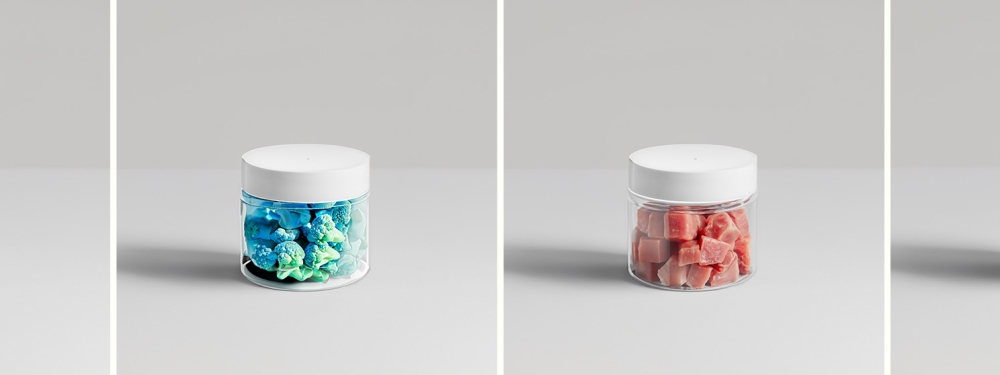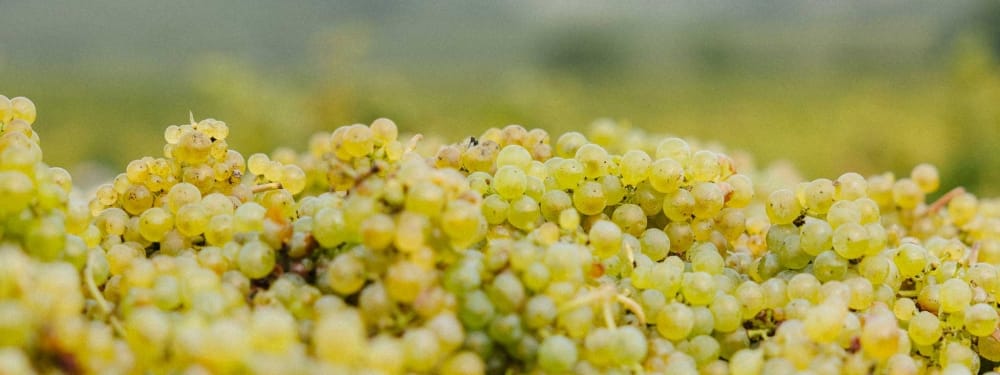Milk in focus
True to our name, we have taken a closer look at the future of milk…
Per capita consumption of pure drinking milk (cow’s milk) is falling, with one person in Germany consuming 16 liters less in 2022 than in 1995. Cheese, on the other hand, will be more popular, with consumption in 2022 4.7 kg higher than in 1995. Plant-based milk alternatives have become increasingly popular in recent years, with 3.8 kg per capita consumed in 2022. However, drinking milk (cow’s milk) still accounts for the largest proportion of dairy products consumed.
A cow in Germany produced an average of 27 liters of milk per day. (2022) In high-performance operations, it can be even more. But what can be made from the milk of a single cow?
27 liters of milk = approx. 1.5 kg of butter or approx. 2 kg of hard cheese
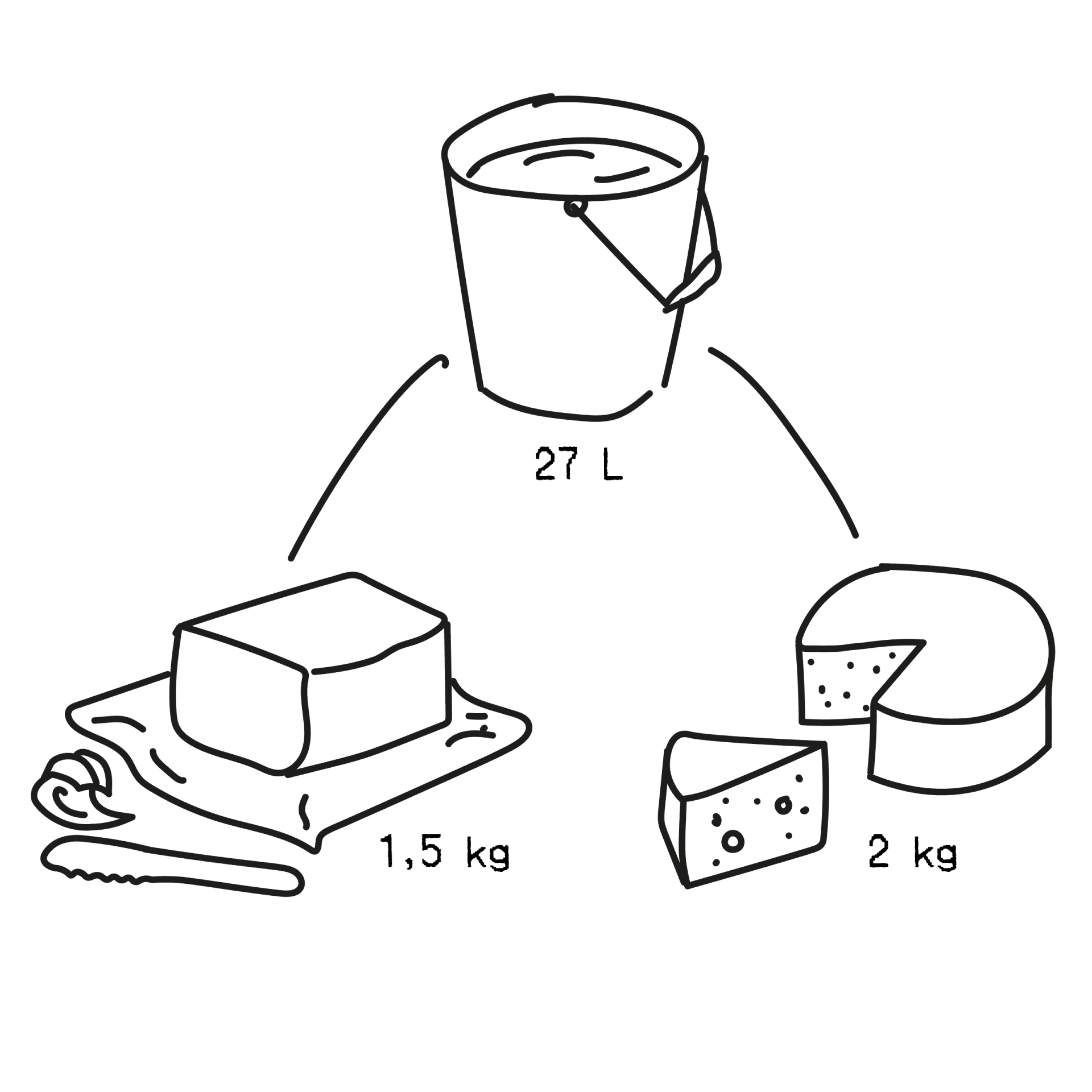
If we look at the land requirements or land use per kilogram of milk, a clear difference between the animal and plant-based variants is immediately apparent. Cow’s milk has a requirement of almost 9 m², whereas the alternative from rice only has a requirement of just under 0.3 m².
Area requirement m² per kg milk
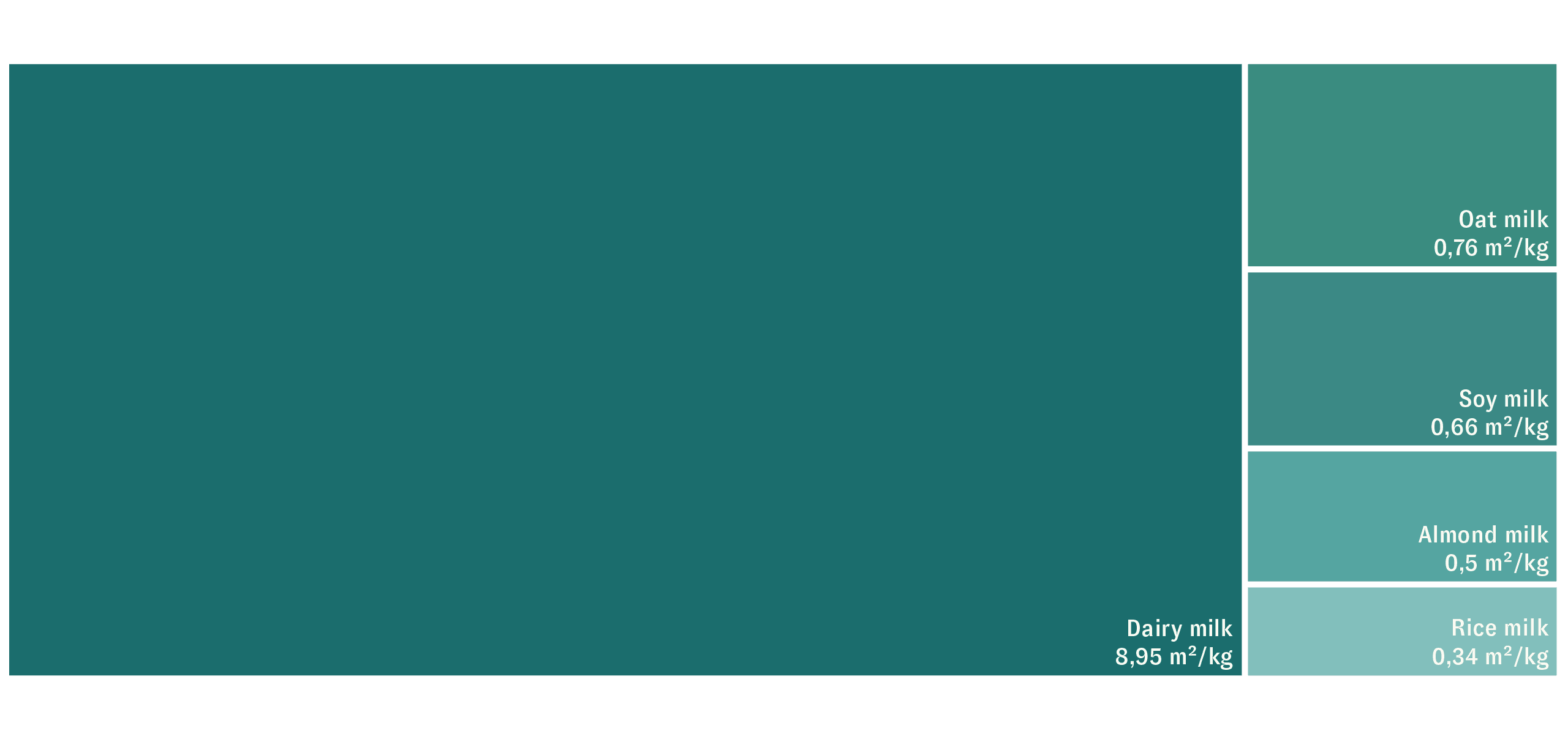
Water consumption in liters of water per liter of milk
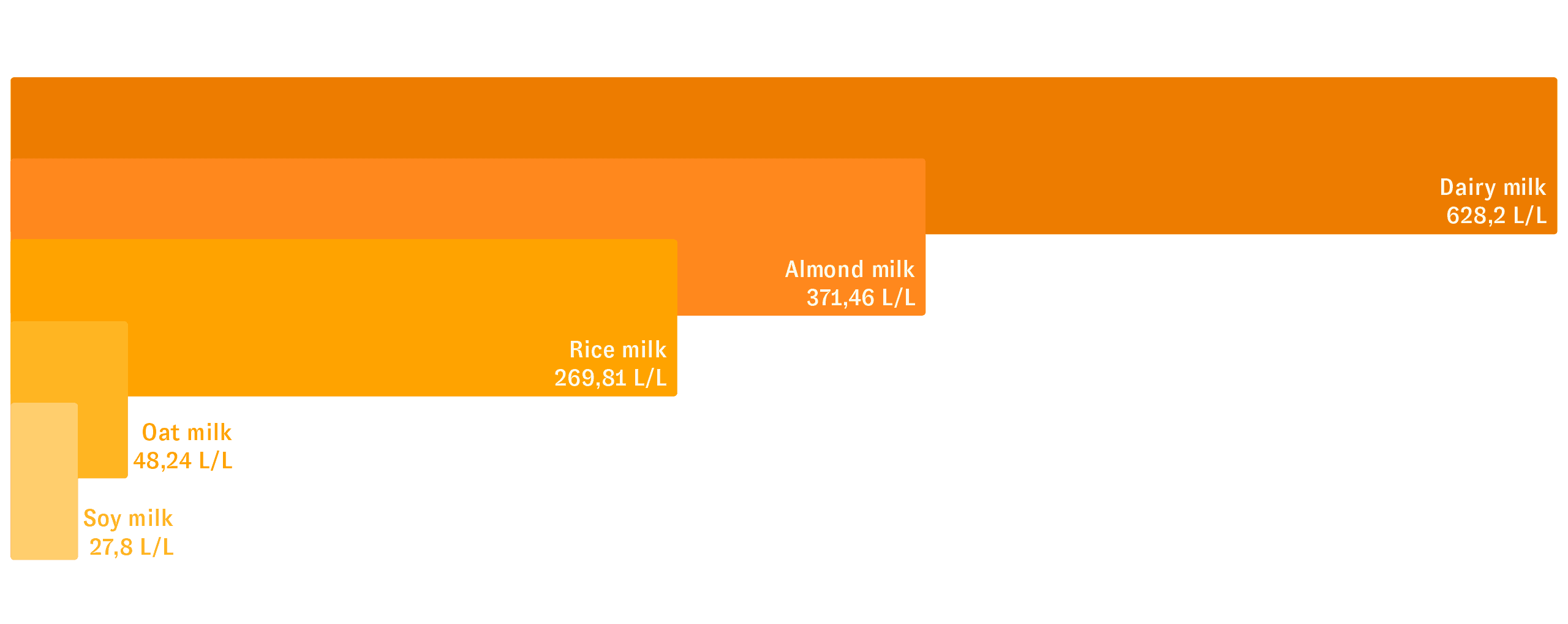
The calculation of emissions is made up of the conversion or new development of agricultural land, local production, processing, transportation and packaging. The values of the first 3 factors are particularly high for animal products. Cow’s milk consumes almost 630 liters of water. One liter of soy milk, on the other hand, contains just under 28 liters of water.
But what about the diet of tomorrow? Will only plant-based alternatives be consumed in future?
Milk without a cow?
Is it even possible to produce cow’s milk without it ever seeing a cow? Precision fermentation can be used to produce vegan cow’s milk, which sounds contradictory at first, but on closer inspection the production is completely animal-free. A DNA strand that is responsible for the production of milk protein is used in microorganisms. These genetically modified organisms then produce the milk protein, which can be further processed into various products. Bioreactors are required for this method, which means that more energy is required and the optimum conditions for the organisms must be precisely maintained and controlled. This is the only way to produce on a large scale. On the other hand, the factors associated with animal husbandry, such as stabling, pasture and feed, are eliminated. Companies such as remilk and formo are already producing vegan cow’s milk. The expansion of the technology means that production costs are continuing to fall and large-scale, serial production is foreseeable in the future.
Research is also being carried out into animal-free alternatives for fetal calf serum, which is used for culture media, with the help of precision fermentation. This is particularly interesting with regard to in-vitro meat.
Fermentation has been around for thousands of years and has become a real trend for some time now. Here at the agency, we have also been exploring the possibilities that fermentation can offer for some time. In an interview with Cathy Hutz from Infinite Roots, we take a closer look at the fermentation of mushroom mycelium.
In our trend radar, we look at the food of tomorrow:
Sources:
https://www.landwirtschaft.de/landwirtschaft-verstehen/haetten-sies-gewusst/landwirtschaft-in-zahlen/27-liter-milch-gibt-eine-kuh-am-tag
https://www.landwirtschaft.de/landwirtschaft-verstehen/haetten-sies-gewusst/wie-viel-milch-braucht-man-fuer-ein-paeckchen-butter
https://www.kaesekompass-nrw.de/kaeseinfos/infos-im-ueberblick/herstellung#:~:%A4se%,1,%20Liter%.
https://www.bmel-statistik.de/ernaehrung/versorgungsbilanzen/milch-und-milcherzeugnisse
https://de.statista.com/statistik/daten/studie/318237/umfrage/pro-kopf-konsum-von-milch-und-milcherzeugnissen-in-deutschland-nach-art/
https://ourworldindata.org/environmental-impact-milks
https://www.foodunfolded.com/de/artikel/milch-ohne-kuh-kommt-milch-zukuenftig-aus-petrischalen
https://www.zukunftsinstitut.de/zukunftsthemen/praezisionsfermentation-fantastische-geschmackswelten
https://www.gea.com/de/stories/how-precision-fermentation-can-advance-sustainable-dairy/
https://www.cluster-bayern-ernaehrung.de/infografik-die-vielfalt-der-fermentation/
https://blog.zhaw.ch/eat-grow-change/2023/07/26/precision-fermentation-milch-aus-dem-bioreaktor/


